What kind of soil and capacity is needed for violets?
For a flower garden on the windowsill, they usually choose violets, or saintpaulia. They take up little space, and the beauty of their leaves and flowers cannot be compared with any other plants. These bright and delicate bouquets of flowers attract with the fragility of the petals, their virgin purity, and the unusual colors. It is difficult to grow them, not everyone can cope with this difficult task. But there are no obstacles for fans of violets: they study all the nuances of the conditions for growing and caring for a room beauty.
For the first time, the description of the violet was made by the German botanist Wendland, who called the flower saintpalia. Another name for the plant is the uzambara violet in the area in Africa, where it was discovered. There are thousands of varieties of violets in the world, and its breeding is actively continuing. All types of indoor flower are similar to an underdeveloped root system and rosettes of leaves. The varieties differ in the shape of the sheet plate, its diameter. And the variety of inflorescences is such that it is simply impossible to describe all types.
Content:
- The best of the violets
- How to choose a container for a plant
- Soil for violets: what should be
- How to properly water and feed Saintpaulia
- Creating conditions for the development of violets: lighting, humidity, temperature
- Terms and rules for plant transplantation
- Prevention and control of diseases, pests
The best of the violets
Three types of indoor flowers have been identified: simple, double and semi-double. In simple plant species, flower petals are arranged in one row, in semi-double and double ones - in two or three rows.
According to the color of the petals, a monochromatic violet and a fancy color with spots and dots are distinguished. Some varieties have a contrasting border around the edge of the petals. In chimeras, a line is drawn in the center that is different in color from the main tone.
Among the best varieties of violets, the following saintpaulias are noted:
- The five-petalled variety Lions Pirates Treasure has bright pink flowers with a raspberry border.
- In the rosette of wavy leaf plates of the Melody Kimi variety, there is a bunch of delicate flowers with two blue petals on top and white ones on the bottom.
- They look like Austins Smile coral violet stars.
- Common among flower growers Saintpaulia Admiral. Cornflower blue semi-double bell flowers with wavy edges remind of the sea.
- Of the two-tone species, LE-Tigris can be noted - pink-coral petals, rather large, with a white spot in the middle adorn the plant.
- Of the chimeras, the original violet Solitaire. She has blurry purple stripes coming out of the yellow middle. Everything looks very harmonious against the background of snow-white petals.
- The corrugated cups of the Ming Dynasty are snow-white, framed by stripes of lilac along the edge. In a rosette of variegated leaves, they look decorative.
- In the Natalis variety, Estravagante is attracted not only by the lace of white-pink flowers with a greenish border, but also by the variegation of the leaves.
- A complex, unusual color of the violet Chimpansey, which combines the bright pink tones of semi-double stars-petals with strokes, swirls of blue on them.
The variety of types and varieties of flowers allows you to choose those whose color matches the taste, mood of the owner violets.
How to choose a container for a plant
Choose a pot for planting homemade Saintpaulia thoroughly. This plays a big role in the development and flowering of the plant. The capacity is selected taking into account the diameter of the rosette of leaves. For children, a flowerpot 6-8 centimeters in diameter is suitable, for an adult plant, 9-10 centimeters.
In this case, the height of the container can reach no more than ten centimeters. If the pot becomes small, then the violet will not bloom. And in a large-diameter flowerpot, the soil will begin to acidify, since the roots of the plant will not use it in nutrition. The soil will cake, rot, which will affect the plant.
The diameter of the pot is measured by the size of the leaf outlet, halving it.
The best material for a flowerpot would be plastic or ceramics. But be sure to put a pallet under the container, and the bottom of the pot has holes. Then excess moisture will not accumulate inside, and the plant will avoid fungal diseases. Carefully choosing a container for a violet, one must remember that its roots are small and fill the entire volume of the soil mixture.
Soil for violets: what should be?
Weak root system a houseplant requires a soil that will allow moisture and air to pass through well. You can buy soil for violets in the store. Prepare the substrate on their own in various ways:
- If drainage is laid at the bottom of the pot, then add a mixture of leafy, sod, coniferous, peat soil, taken in a ratio of 3: 2: 1: 1. As a baking powder, a handful of wood ash and two chopped sphagnum moss.
- If drainage is not used, river sand is added.
- A nutrient mixture is obtained from vermicompost, peat or coconut fiber. A baking powder will be perlite or vermiculite.
- Simple peat soil is also suitable for Saintpaulia, but it must be constantly fed.
The correct selection of soil components for violets is important, otherwise it will be sluggish, mold will appear on the surface of the earth.
How to properly water and feed Saintpaulia?
It seems that caring for a gentle beauty is not complicated, but the requirements for it are high. The main thing that the plant needs is competent watering. Moisten the soil in the pot after the top layer begins to dry. If the room is always hot, then it should be watered either daily or every other day. Water is taken only at room temperature, standing for a day. It is not necessary to pour a lot of liquid, it is better to send the excess to the pallet.
Watering should be done in such a way that no water gets on the leaves. You can use the wick moisturizing method. A cord is placed in the pot during planting, passed through the soil, drainage. Placing a container with a violet over a container of water, lower the wick there. So the plant will constantly receive moisture. Diligent watering and its lack leads to the death of the flower.
Saintpaulias often develop well, but do not bloom - and here the point is in the lack of useful microelements and vitamins.
A plant can get them from fertilizers. After planting, the violet has enough food, but then the soil becomes depleted. Then the leaves begin to turn pale, turn yellow. This indicates a lack of nitrogen, and their reddish tint indicates a lack of phosphorus. Spots on the edges of the leaves occur when there is little potassium in the soil.
Balancing micronutrients in top dressing is an important task for a grower. It is better to purchase complex fertilizers in a specialized store. Pay attention to the composition of the substrate, it should contain more potassium and phosphorus, and less nitrogen. Add nutrient solution after glaze... In the active phase of growth, it is enough to feed Saintpaulia once every three weeks, and during the rest period - once a month. The concentration of the solution is done by taking two grams of fertilizer per liter of water. Saintpaulia will bloom only when it receives it on time mineral complexes.
Creating conditions for the development of violets: lighting, humidity, temperature
Since the homeland of the flower is the moist soils of the African continent, then the conditions must be created for the plant similar to:
- Sunlight is useful for violets, but diffused, dim. Otherwise, ultraviolet rays will leave burns on the leaves. The eastern and western window sills of the house are suitable for Saintpaulia. During the growing season, the plant needs a daylight hours of ten to twelve hours. If there are no such conditions, then they organize backlighting with fluorescent lamps. They are placed at a distance of half a meter from flowering bushes. I would like the violets to delight with blooming constellations all year round, then the lamps will work in winter.
- The humidity in the room should be within fifty to sixty percent. In winter, it decreases, so you can put containers of water on the windowsills. You can increase the humidity by placing moss or pebbles moistened with water in the pan. It is not recommended to arrange a shower for violets, but the leaves are wiped as they become dusty.
- The air temperature in the room where the saintpaulias grow must be controlled. It should be between 18-25 degrees Celsius. The plant does not tolerate heat well, begins to wither. And low temperatures lead to a weakening of the immunity of the green organism.
Flowers look beautiful, healthy, if the conditions for their growth are met.
Terms and rules for plant transplantation
The active growth of the violet leads to the fact that its capacity becomes small. At this moment, the flower is transplanted into another container. The pot is taken two to three centimeters larger in diameter than the old one. A transplant is also organized if the house plant slows down in development. The procedure is carried out after the plant's growing season has ended - at the beginning of winter. You can transplant a violet in February, before activating growth processes.
The procedure begins by choosing a container, filling it with drainage and soil mixture.
Be sure to disinfect the soil by spilling with a solution of potassium permanganate. After the procedure, leave a pot of soil for a week to saturate the earth with oxygen, beneficial microorganisms.
Having pulled out the plant from the old pot, they are transferred together with the clods of earth on the roots into a prepared container. Then the soil is tamped a little and watered. To rejuvenate the violet, its leaves are cut off. The dying lower leaves must be removed, and the top is cut off for reproduction. To any deviation in developmental conditions, the violet disease reacts with lethargy, weakness. Only a transplant can save a plant.
Prevention and control of diseases, pests
Saintpaulias are subject to various fungal diseases:
- Rot fungi affect the root of the plant. From this, the flower begins to wither, and if it is not transplanted, it will die.
- Whitish bloom spreads to the leaves, stems - these are the first signs powdery mildew... The disease actively occurs if the plant does not receive enough light, and the room has high air humidity. Treatment with Topaz will save you from the fungus three times with a break of ten days.
- Phytosporosis spores destroy the roots and leaves of the plant. You can treat a violet by transplanting its children into another container.
- Fusarium begins with rot on the roots. And the flowering bushes at the same time begin to weaken, turn yellow. A diseased plant cannot be saved; it is destroyed. And healthy flowers are treated by spraying with Fitosporin.
Of the pests, Saintpaulia is most often attacked. nematodes, spider mites, larvae of midges sciarid. Pests suck juice from leaves violetseating parts of the plant. You can fight parasites with insecticidal preparations such as Aktara, Fitoverm. The health of the uzambara violet depends on the growing conditions, flower care.
More information can be found in the video:



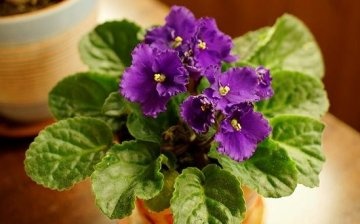
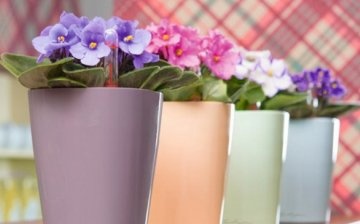
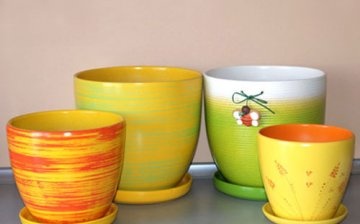
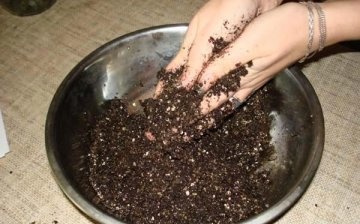
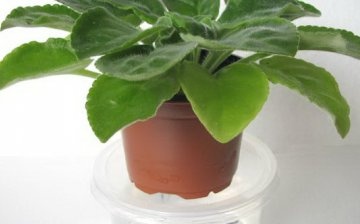
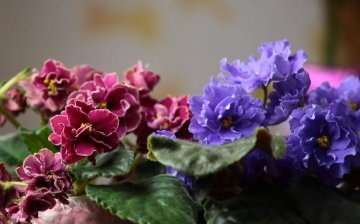
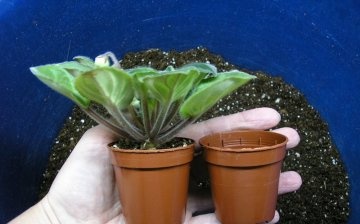
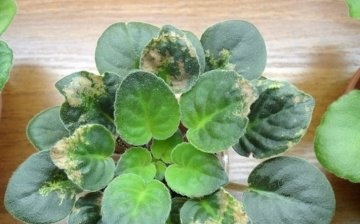








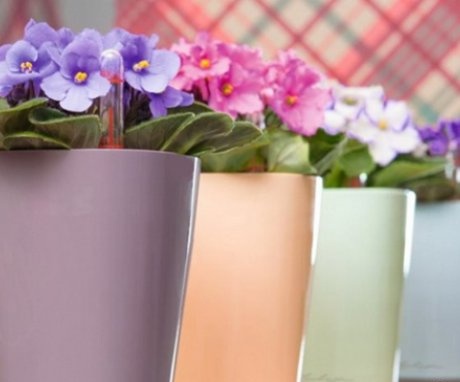
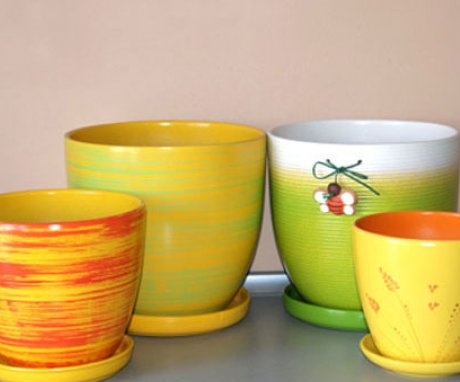

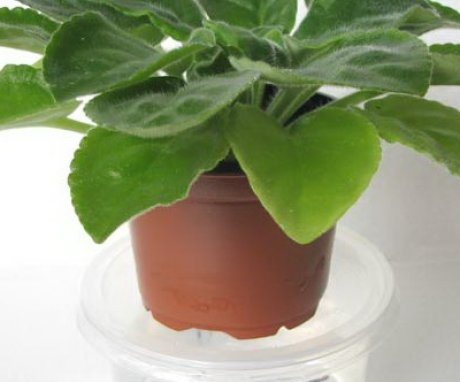
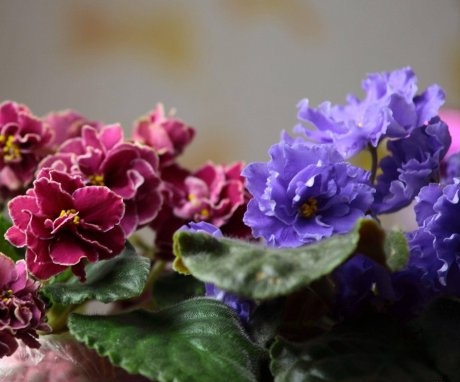

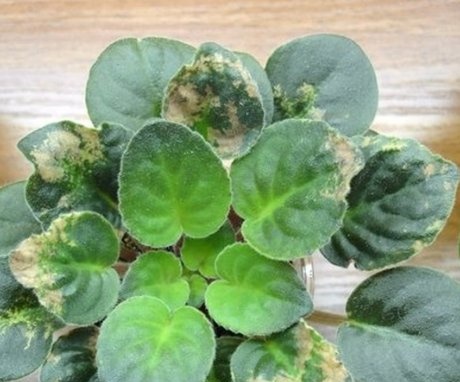
I love violets very much. Previously, they disappeared from me until I started using the wick method of moisturizing.Now they are growing above a container of water, and I periodically add fertilizers there.
Dear reader of this wonderful forum svetik-semisvetik! There is no point in feeding the flowers, they will go into greenery, it is quite enough to change the soil once every two or three years, which is prepared in bags specially for flowers, by buying it in any supermarket. All minerals and fertilizers there are enough for good flowering.
To grow violets, I prefer to use clay or plastic pots, I make sure to do a little drainage, and when planting and transplanting, I add vermicompost and wood ash to the soil.
This is my fourth time trying to grow violets. At first they grow well, then after a while they wither, I look - and the root has rotted! It seems like I water it as described here, and there is enough light. And the transplant didn't help. I'll try to buy new flowers, pots and soil, maybe it's not a matter of improper care, but of an illness.
We have violets growing in small pots and when the flower grows almost from above the pot is not visible! But my wife and I buy ordinary land for flowers. Sold in any supermarket.